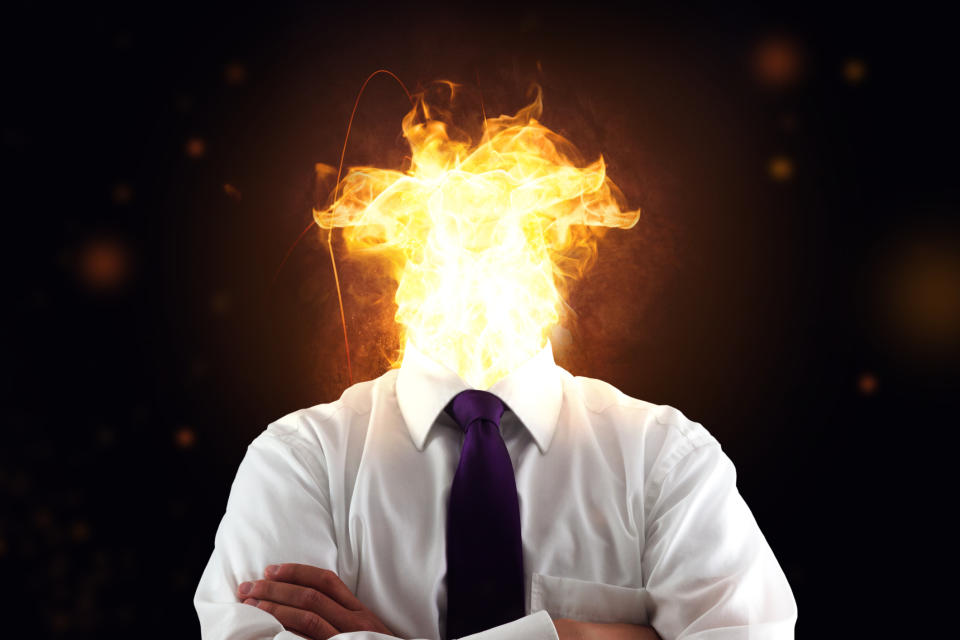This one strategy helps doctors and politicians cope with burnout

For years, employees have been recording symptoms of fatigue and exhaustion, but were often snubbed at by employers for simply being weak.
But, workplace burnout had become such a serious health issue that it was declared a legitimate syndrome by the World Health Organisation earlier this year.
This means burnout will be officially listed as an occupational syndrome, but not a medical condition, according to the WHO.
While the changes are relatively small, experts hope the update will add legitimacy to an emerging and misunderstood syndrome, which the WHO explains is due solely to “chronic workplace stress”.
What are the symptoms of burnout?
In 2016, a psychologist’s daughter explained her father’s burn-out.
That psychologist, Herbert Freudenberger, actually coined the term himself in the 70s after fatigue and stress from his work led to a day when he literally couldn’t get out of bed.
Freudenberger explained the burnout wasn’t just exhaustion, and wasn’t exactly depression - it was really a response to stress and frustration.
“It's a response to a demand that an individual may make upon themself in terms of a requirement for perfectionism or drive,” Freudenburger said.
Nowadays, WHO has characterised burnout by feelings of energy depletion or exhaustion; increased mental distance from one’s job, or feelings of negativism or cynicism related to one’s job; and reduced professional efficiency.
It refers specifically to phenomena in the occupational context, and should not be applied to describe experiences in other areas of life.
How can I cope with burnout?
In the US, physicians die by suicide at the twice the rate of the general population, and more than half of American doctors say they are physically or emotionally exhuasted, and find their work less meaningful than they used to, according to Quartz.
In response to this, the Schwartz Center for Compassionate Healthcare launched its Schwartz Center Rounds program in 2002, where hospitals participate in moderated group discussions designed to prevent burnout in hospital workers.
Essentially, they talk about it.
“Organizers choose a topic: dealing with patients’ families, for example, or a deep dive into a particularly wrenching recent case,” Quartz reported.
“A pre-selected panel of volunteers shares their perspective to get the conversation started. Then it opens for discussion.”
The hope is that by sharing their own experiences and hearing others do the same, caregivers come away with a little more compassion for themselves, and more energy and space to show that compassion and empathy for patients.
And, it worked.
An independent evaluation in 2008 of the Rounds program found that 84 per cent of US Rounds participants said they felt more compassion for patients and their families as a result of the program, and a whopping 90 per cent communicate better with colleagues.
Former Aussie politician and first female leader of the Liberal Party in New South Wales, Kerry Chikarovski, told Yahoo Finance’s editor-in-chief, Sarah O’Carroll, that she wished she had spoken about her problems more during her time in politics.
Chikarovski detailed a particularly bad press conference where she suffered immense bullying from media who plotted to make her cry, and said her “biggest mistake” was that she didn’t talk to anyone about it afterwards.
Given she was one of the first female leaders in Australia, Chikarovski felt she couldn’t show that she wasn’t coping with the stress or difficulty of politics.
Her inability to talk about her problems played a major role in the demise of her relationship with her husband and her career in politics, but she believes things could’ve been different if she had someone to talk to.
Is workplace burnout common?
Last year, The Guardian put out a call for readers who had experienced psychological breakdown following stress at work, and received around 80 responses from a range of workers, including lawyers, accountants, architects and teachers.
Later that year, Gallup surveyed 7,500 full-time workers, and found 23 per cent of them experienced burn-out.
What are the effects of workplace burnout?
The Gallup study revealed employees who very often or always experienced burnout at work were 63 per cent more likely to take a sick day and 23 per cent more likely to visit the emergency room.
Those employees were half as likely to discuss how to approach performance goals with their manager, 2.6 times more likely to leave their current employer and 13 per cent less confidence in their performance.
Perhaps if burnout could be combatted if employees were able to talk about their stresses and troubles with others in the workplace, or even trusted friends without feeling like they’re showing weakness.
Make your money work with Yahoo Finance’s daily newsletter. Sign up here and stay on top of the latest money, news and tech news.

 Yahoo Finance
Yahoo Finance 